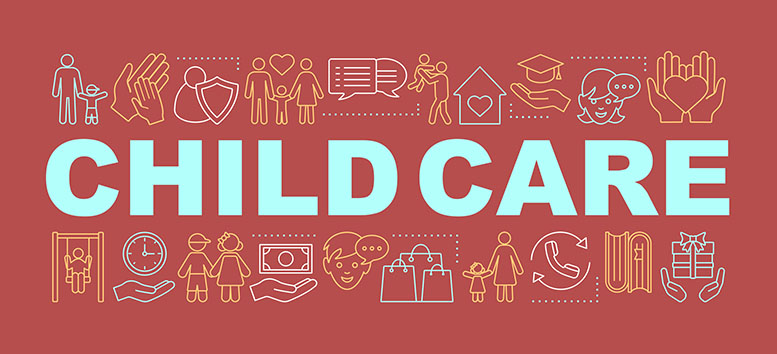A new report from the National Association for the Education of Young Children (NAEYC) highlights the link between early childhood education (ECE) and higher education and the barriers and opportunities that exist to meeting the country’s demand for more skilled early childhood educators.
NAEYC surveyed the early childhood higher education community in May. More than 600 faculty from 400 institutions responded and the findings were “concerning,” say the report’s authors. About two-thirds of ECE programs have experienced enrollment decreases and more than a third of programs saw a decrease in ECE candidates graduating. Thirty percent have experienced budget cuts.
Enrollment declines may not be surprising, though, given that early childhood educators are among the lowest-paid college graduates. On average, they earn $11.65 per hour and only 15% have employer-sponsored health insurance.
With all that in mind, NAEYC interviewed 30 higher education leaders – including several from community colleges – about the current state of the ECE field and how postsecondary institutions can help strengthen the profession.
A disconnect
The two biggest challenges the higher ed leaders identified for the ECE field and higher education are the lack of compensation for early childhood educators and the minimal requirements for degrees and aligned competencies. Many employers don’t require degrees beyond state requirements.
“If early childhood educators are going into positions with minimal requirements and everyone is compensated similarly and poorly, what is the incentive to obtain a postsecondary degree?” the report asks.
And, from the higher education perspective, because there are not strong employment and salary outcomes tied to ECE programs, the question is what’s the incentive to invest in these degree programs.
Related article: Campus child care helps student parents
“There is this near-universal acknowledgment that the practice of ECE is important to us socially and individually. I am struck by the disconnect between the esteem for practitioners and the failure to acknowledge that financially,” said Christina Whitfield, vice president and chief of staff for the State Higher Education Executive Officers Association.
Interviewees suggested that, when promoting ECE programs, “lead with the science” and make the connection between how both postsecondary institutions and high-quality ECE help advance the human condition.
The role of community colleges
Despite challenges, interviewees from community colleges said their ECE degree programs are their “strongest offering, with the highest number of faculty and the most interest from external business and political partners,” which has led to accelerated innovations.
“I started as the director of the campus child development center. Everything I needed to know about supporting students’ postsecondary success was embedded in that early childhood framework and environment,” said Margaret Annunziata, president of Isothermal Community College in North Carolina.
There are stronger articulation agreements between associate and bachelor’s degree programs, allowing for easier transfer for ECE students. Some community colleges also can offer bachelor’s degrees in this area.
Minority-serving institutions also are playing key roles in advancing ECE. Close to half of the ECE workforce identifies as BIPOC (Black, Indigenous and people of color).
To keep the momentum going, though, leadership at higher education institutions need to declare that early childhood education programs are an institutional priority. And, as the country emerges from a health crisis and more people return to the workforce, now is the time for leaders to use their influence with state policymakers to increase investments in ECE.
Recommendations
The NAEYC report included three opportunities for higher education to help strengthen the ECE field.
The first opportunity involves accelerating innovations in associate and bachelor’s degree alignment and student supports. That means strengthening articulation agreements for seamless transfer and ensuring BIPOC early childhood educators have the supports needed to access the postsecondary pipeline. Interviewees also suggested better alignment between general education requirements and program requirements, as well as more partnerships with community-based organizations so students are fully supported.
Another “innovation” is to let community colleges offer limited bachelor’s degrees. Dallas College, for example, can award an ECE bachelor’s degree, allowing students to get a four-year degree for $10,000.
“We are opening the door and creating access to consumers that haven’t historically been consumers of higher education. And, we are addressing our goal, which is diversity of the workforce,” said Rob DeHaas, vice provost of Dallas College’s School of Education.
A second opportunity is to accredit ECE degree programs. Accreditation remains a voluntary option for ECE professional preparation programs. It can help professionalize the field and give the degree program and its faculty more standing at an institution.
The third opportunity in the report is to extend childcare benefits to faculty, staff and students. Interviewees acknowledged this is an expensive venture, but as demand for childcare has outpaced supply across much of the country, it’s an “investment worth making.”
For Annunziata, a better prepared ECE workforce benefits everyone – including the children in the early childhood education system now.
“The students who need remediation to be prepared for postsecondary coursework are the same students who needed extra literacy supports in elementary school. If we do not invest in ECE, then we will continue to see students as they work their way through the education system who are not well served,” she said. “The only way to close equity gaps is to do it at the beginning.”


